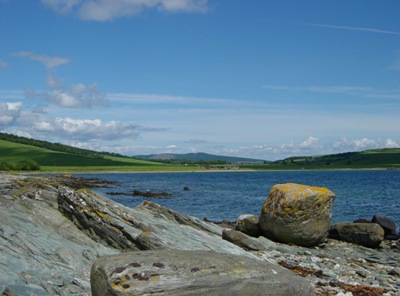 20060627_012 20060627_012 |
Bluish-grey phyllites exposed at Ettrick Bay. These are low grade metamorphic rocks (chlorite grade) and are part of the Southern Highlands Group of the Dalradians, here structurally forming a synformal anticline stretching north-eastwards, a part of the Tay Nappe. Recent erosion has carved out the relatively weak phyllites to form the bays and the low-lying ground between Ettrick and Kames.
(photograph: June 2006) |
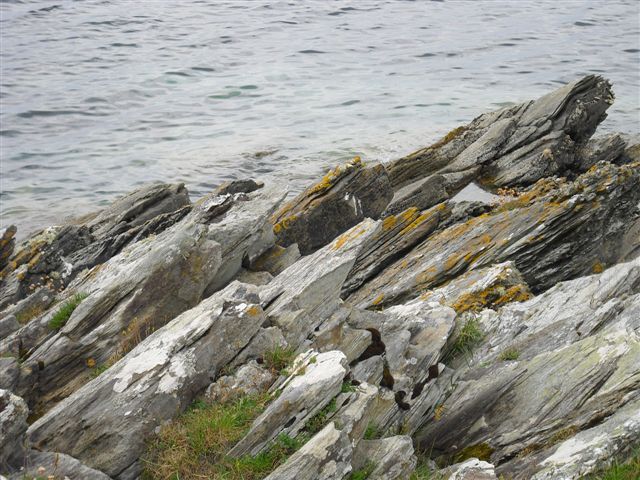 |
GRADED BEDDING (about 1 mile north of Ettrick Bay). These units in Dalradian schist have only been lightly metamorphosed and retain their sedimentary structure. Each unit can be seen to have been eroded deeply at the bottom, where the grain size is fine and less deeply at the top because of coarser grain size - but they were laid down by turbidity currents on the margins of a deep ocean, in which the finest material will settle out last. Therefore, they have been inverted. They form part of the synformal anticline, the Tay Nappe, which stretches far to the north-east alongside the Highland Boundary Fault.
(photograph: June 2010) |
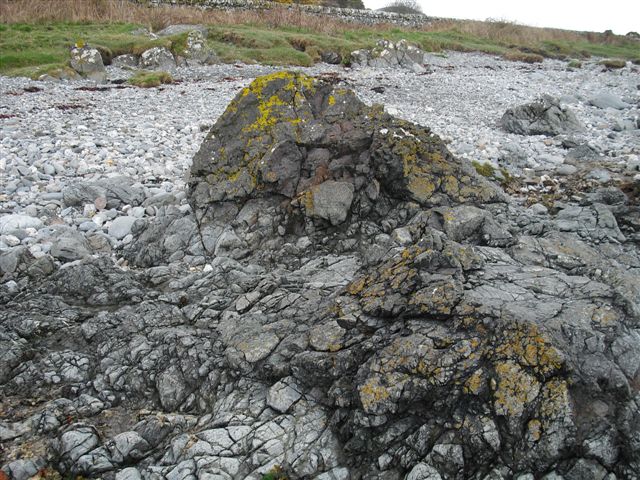 |
Rocks exposed at Scalpsie Bay are typical Highland rocks at the north-west end of the bay and Lowland rocks in the south. The Highland Boundary Fault therefore lies between these areas. The rocks illustrated here are part of the complex Highland Border Series of Ordovician(?) age, and may represent oceanic crust obducted in an ophiolite. |
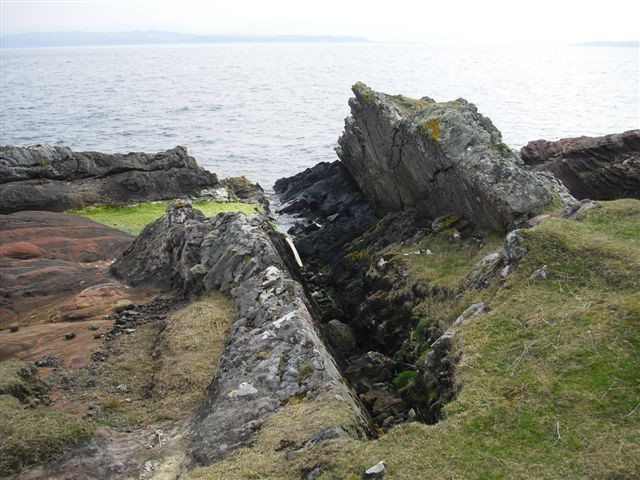 |
Erosion of the Caledonian Mountains in Devonian times spread sandstones and conglomerates of Old Red Sandstone facies across the Midland Valley of Scotland. They were laid down in a dry terrestrial environment, with occasional flash floods.(Here, at White Port, south of Kilchattan, a largely eroded dyke of tertiary age has baked the sandstone to form the prominent margins). |
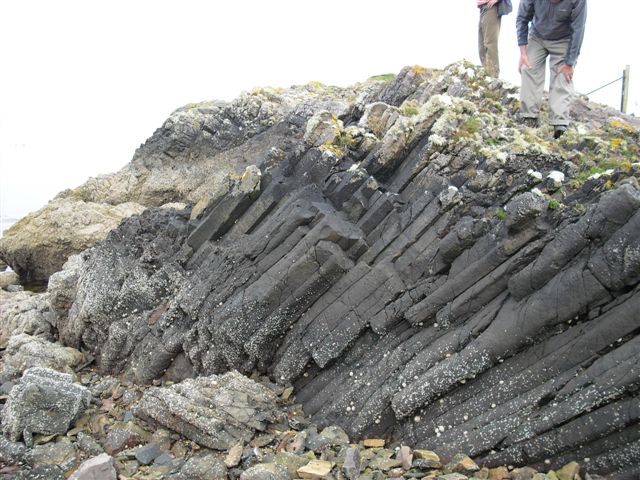 |
Columnar sandstone - a very rare phenomenon - produced by thermal metamorphism of Old Red Sandstone caused by contact with a dyke, which must have been alongside, but which has been removed by marine erosion. The columns fade out gradually into normal red sandstone with increasing distance from the dyke heat source. (the exposure is very close to the car park at the Kilchattan south road end). |
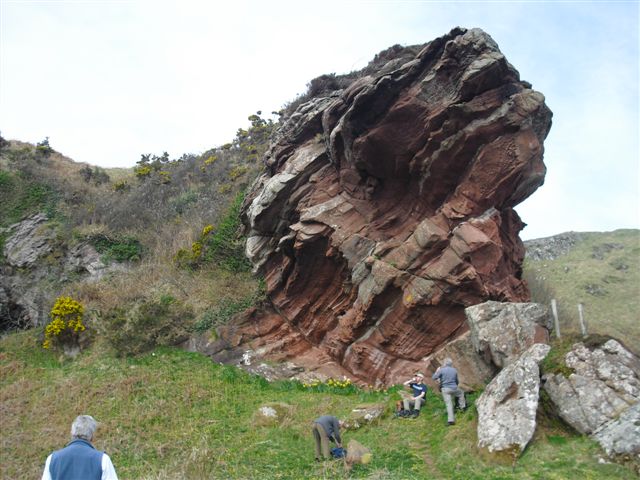 |
Steeply dipping rocks at the striking headland of Hawk's Nib, south of Kilchattan, illustrate the transition from the hot, generally dry, but erosive environment in which formed the red sandstones of the ORS seen here at the right to calmer, wetter conditions of lowermost Carboniferous times, during which formed the greenish-white, lime-rich cornstones (caliche) seen at the left. Tilting of the beds may have been due to earth movements of the Variscan or Tertiary. |
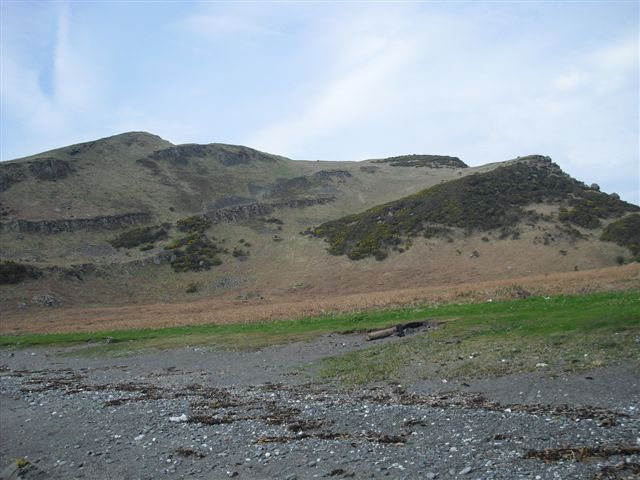 |
The south end of the island of Bute is largely composed of a succession of gently dipping basalt lavas of Carboniferous age, although these were disrupted by prominent dolerite and quartz-porphyry intrusions during the Tertiary. Towards the left in this view are the older lavas, while on the right is a dolerite sill from the Tertiary. The soils which develop on dolerite tend to favour the growth of whin (gorse), which explains its common name of whinstone.
(view west from Glencallum Bay). |
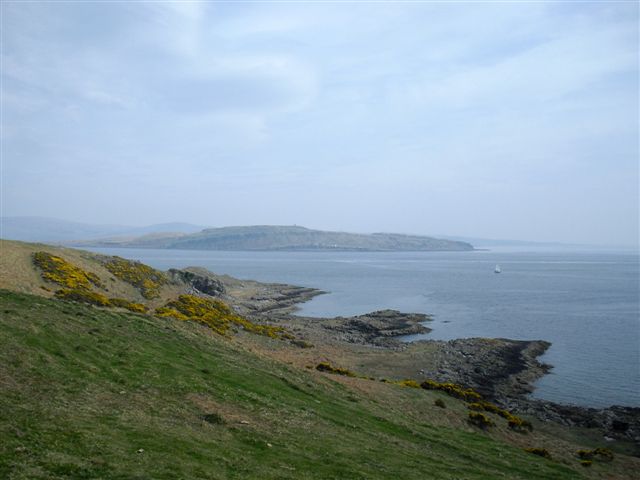 |
Successive Lower Carboniferous lava flows here give rise to a series of headlands, whose gently dipping top surfaces roughly correspond to the top of each individual flow. Dip is towards the south-west - towards the bottom right in this view. Lower Carboniferous lavas also form the island of Little Cumbrae in the middle distance. (view eastwards from the lower slopes of St. Blane's Hill). |
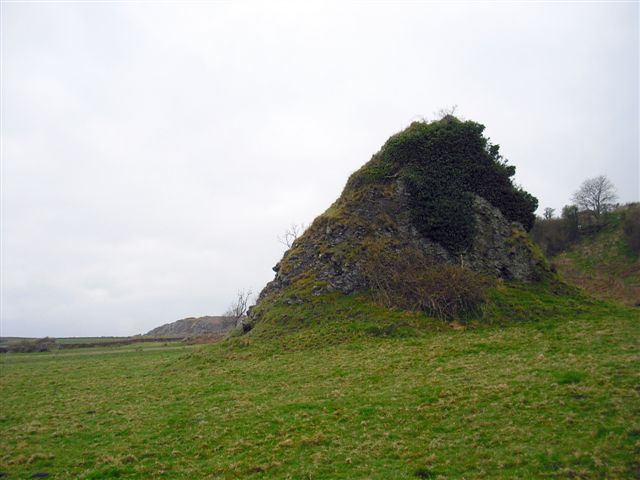 |
The Haystack at Scalpsie Bay is a geological enigma! It is composed of coarse boulder conglomerate lying on Dalradian schist, but its age is uncertain. It could be of Old Red Sandstone or New Red Sandstone (Permian) age. Not in doubt is its recent geological history - it was a sea stack, isolated from the former sea cliffs behind, and now lying on the raised beach. |
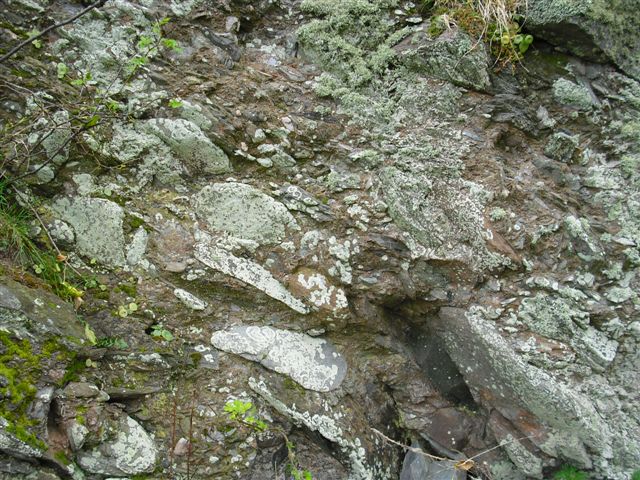 |
This is a detail of the conglomerate of the Haystack, made up of rounded Dalradian schist fragments in a sandy matrix. It remains a mystery that this relatively soft material was not eroded by the action of the sea in relatively recent times when it was a stack surrounded on all sides by the sea. |
| TOP |
NEXT FIELD TRIP > |